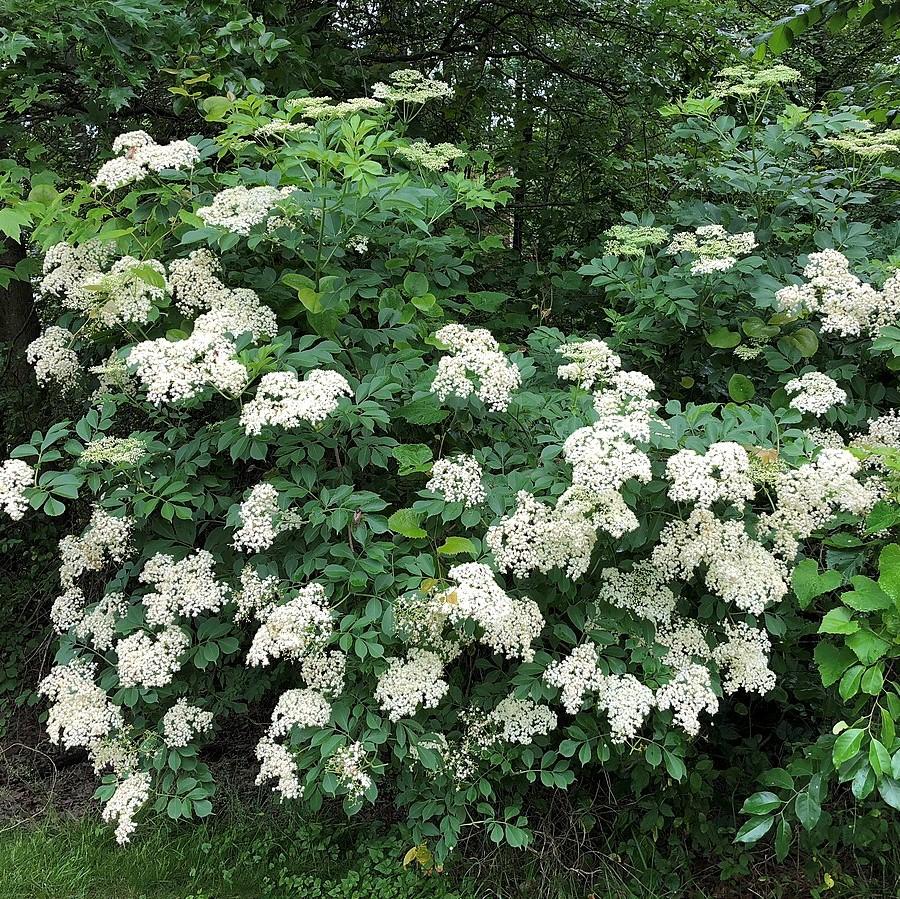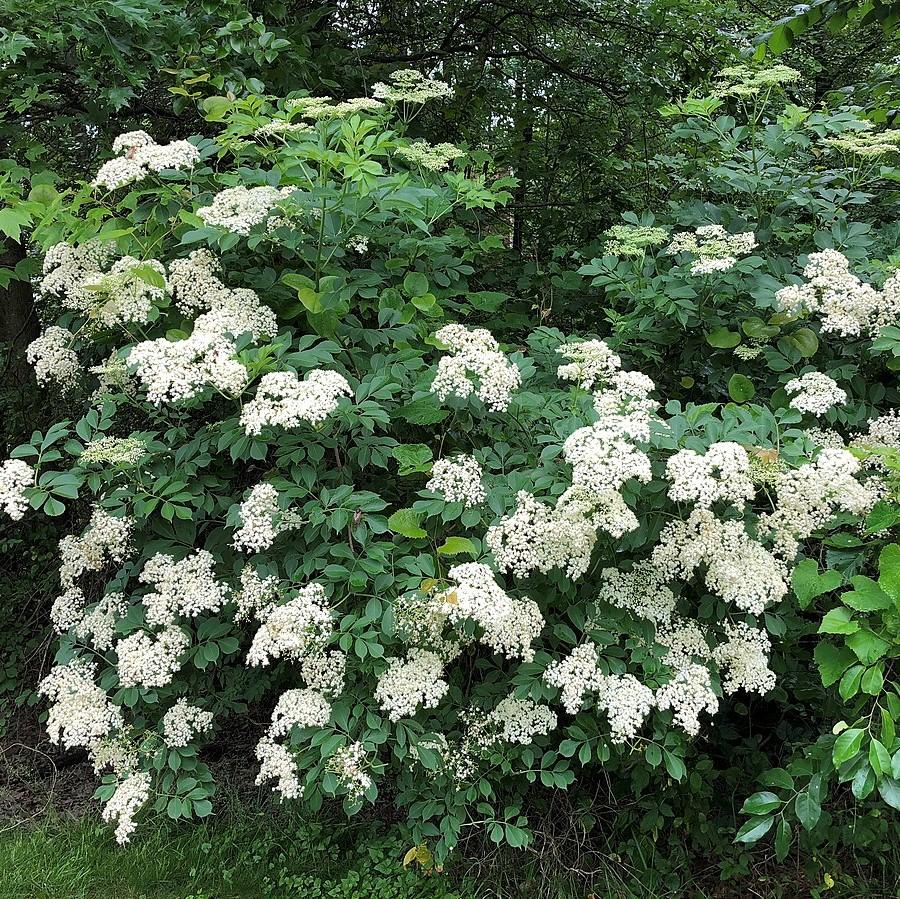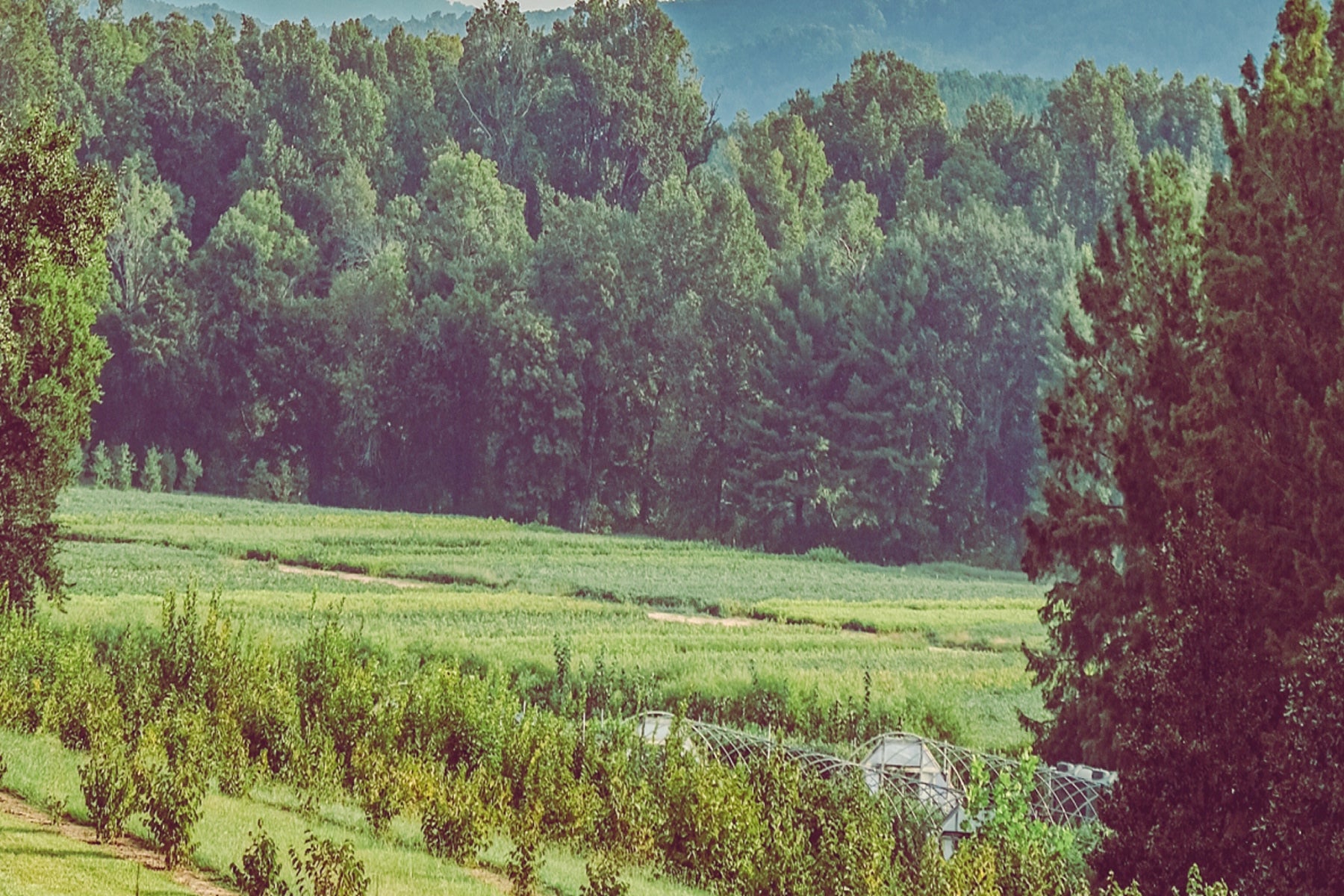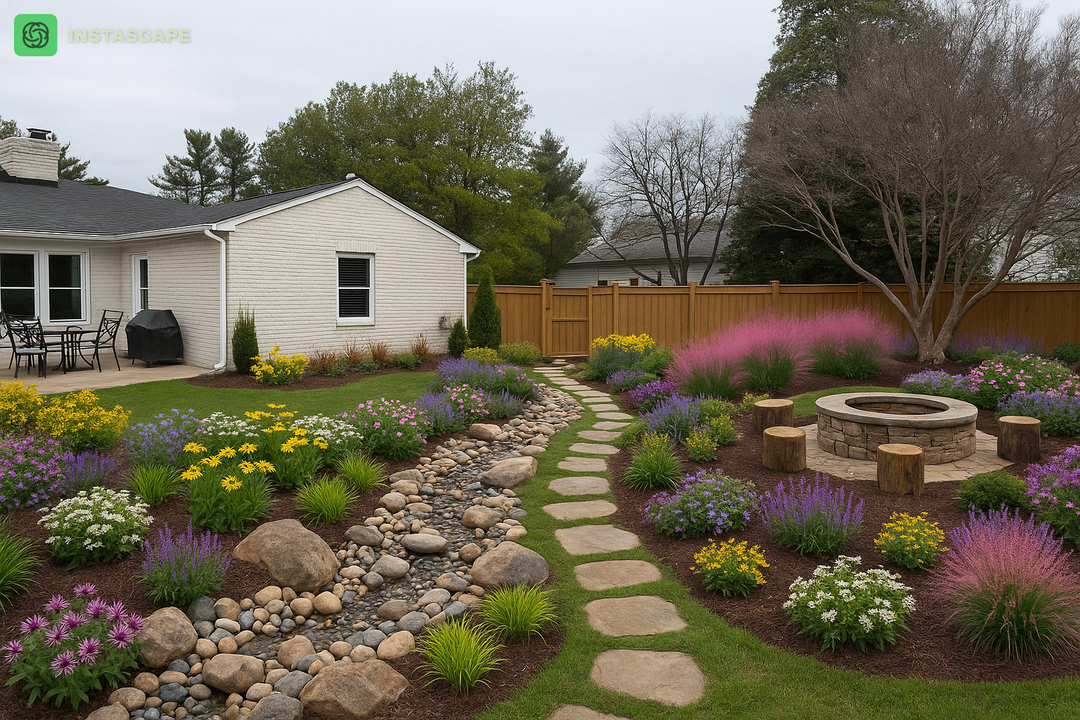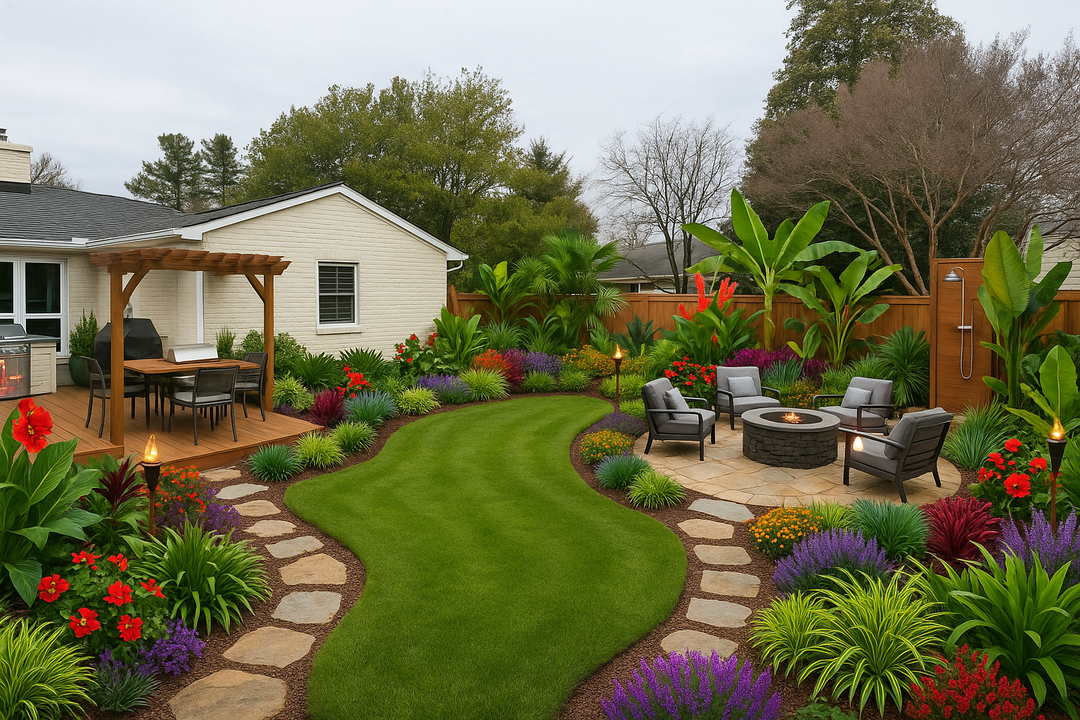Common Elderberry is a native sprawling deciduous shrub with tiny lemon scented summer flowers and edible berries. The finely serrated foliage has a mild yellow color in fall. Flat top clusters of the star shaped flowers begin in late spring through summer. The purple-black drupes begin in late summer to fall. Grows best in moist, humusy well-drained soils.
|
Type: |
|
|
Origins: |
Eastern N. America; GA Native |
|
Height: |
5’ - 12' |
|
Spread: |
5' - 12' |
|
Spacing: |
10' |
|
USDA Hardiness Zone: |
3 - 9 |
|
Culture: |
|
|
Bloom Color: |
White |
|
Season of Interest: |
MAINTENANCE NEEDS: High Maintenance. No serious pests or diseases. Some susceptibility to canker, powdery mildew, leaf spot, borers, spider mites and aphids. Old wood may be damaged in high winds or heavy snow. Prune root suckers to avoid colonizing unless allowing naturalization. Prune in late winter to rejuvenate habit as needed.
LANDSCAPE USES: Group Plantings or Specimen Tree, Naturalized Areas, Wildlife Gardens, Privacy Screen, and Shade Tree
COMPANION PLANTS: Ornamental Onion, Loosestrife, Flowering Dogwood
IMAGES: Famartin, 2021-06-03 10 04 52 American black elderberry flowers along Stone Heather Drive in the Franklin Farm section of Oak Hill, Fairfax County, Virginia, CC BY-SA 4.0, (2) Photo by F. D. Richards, Sambucus canadensis () 2019 photo, (3) Cephas, Sambucus canadensis UL 01, CC BY-SA 4.0, (4) R. A. Nonenmacher, Sambucus nigra ssp canadensis SCA-04392, CC BY-SA 4.0, (5) Rison Thumboor, American elderberry (Sambucus canadensis)1, CC BY-SA 4.0
*As plants have ranges in appearance they may not appear as the images shown.

